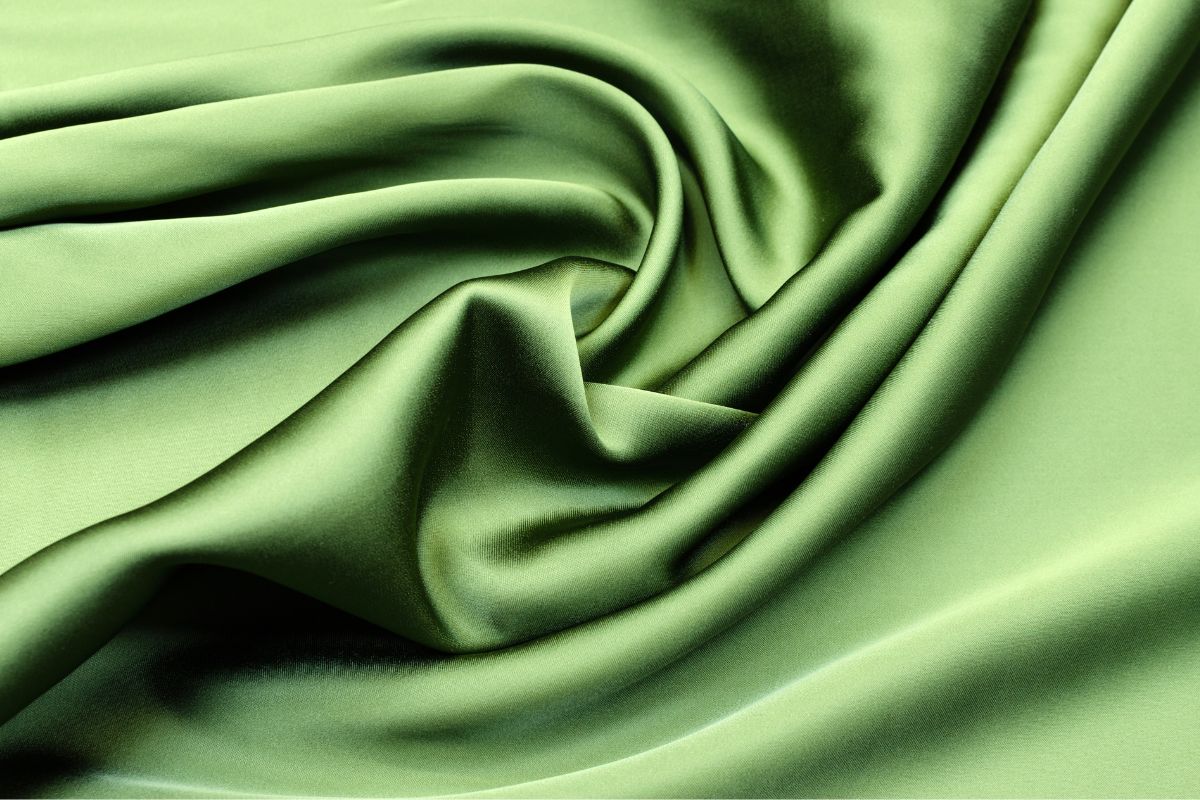When you’re choosing fabrics for comfort and breathability, you may wonder where viscose stands among its textile counterparts. Viscose, a semi-synthetic material also known as rayon, is made from the cellulose of wood pulp, and it has gained popularity for its silk-like feel and absorbent properties. Its breathability is often compared to that of natural fibers like cotton, making it a favored choice for clothing designed to be worn in warm climates or during physical activity.
The breathable nature of viscose fabric stems from its ability to absorb moisture, which lends to its capability to allow air to flow through the material and keep the skin cool. Moreover, it’s not uncommon to find viscose blended with other fibers to enhance its attributes, such as combining it with cotton to improve its durability and comfort in wear. These blended fabrics undergo various treatments to boost their moisture-wicking capabilities and optimize their wearability.
It’s important to note, however, that while viscose exhibits breathable characteristics, the feeling of comfort can vary based on the weave of the fabric and the finishing processes it has undergone. For example, some finishes may increase the water repellence of viscose, potentially affecting its breathability. Overall, the treatment of viscose and the structure of the textile largely dictate its performance in terms of breathability and moisture control.
Understanding Viscose as a Material
From your cozy t-shirts to flowy dresses, the chances that you’re already using viscose are high. This material, known for its silk-like feel, is actually made from natural sources and has a complex production process that transforms plant fibers into the soft, breathable fabric you often enjoy.
The Basics of Viscose
Viscose falls under the category of natural fibers, which means it originates from natural materials. At its core, viscose is a type of rayon, unique in that it’s derived from cellulose, an organic compound found in plants. Despite its natural beginnings, the transformation from plant to fabric involves a chemical process that reconfigures the cellulose fibers into threads that can be woven into textiles.
The fabric’s properties make it exceptionally breathable and soft, which is why it’s frequently used in items that require comfort and drape well. Since viscose manages moisture well, it’s often blended with other fibers to enhance its qualities, creating garments that buyers find appealing for both comfort and aesthetic.
Natural Sources and Production Process
The journey of viscose begins with this material’s natural sources: the wood pulp of various woody plants. Common sources include bamboo, eucalyptus, sugar cane, and more. The pulping process isolates the cellulose, which is then dissolved to form a viscous solution—hence the name viscose.
This solution is spun into fibers, through a process called spinning, which are later incorporated into fabric. As sustainable practice becomes more significant in the textile industry, the environmental impact of this process is often a hot topic. Conscious of this, manufacturers continue seeking ways to make the process more eco-friendly, such as using bamboo which requires less water and pesticides to grow.
The production process is meticulous, requiring attention to detail to ensure the final product retains the desired qualities such as breathability and a soft hand feel. When you choose a viscose garment, you’re selecting a piece that the convergence of nature and science has carefully crafted.
Physical Properties of Viscose Fabric
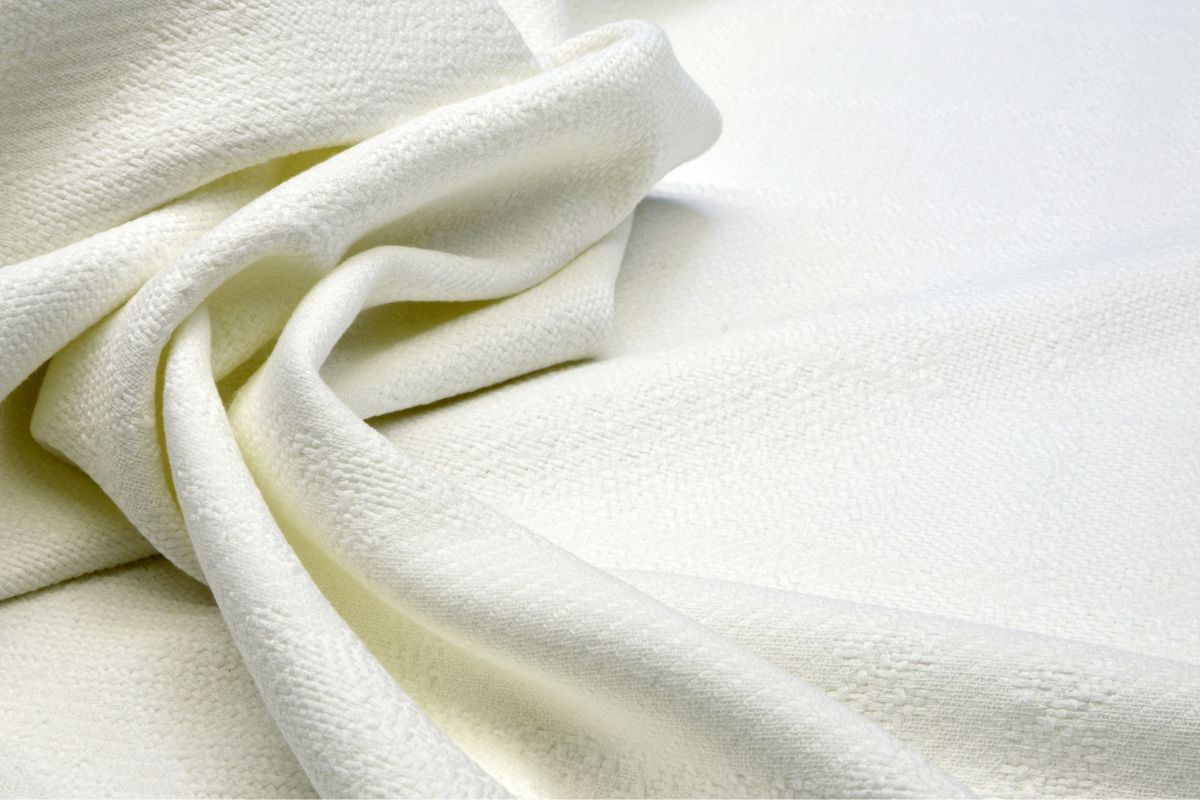
Viscose fabric, a material heralded for its silk-like feel and superb drape, is valued for its balance between luxurious softness and practical attributes, particularly its breathability. Here’s a breakdown of its defining physical properties.
Texture and Feel
Viscose fabric is known for its exceptionally soft texture, often likened to silk for its smoothness. This material confers a pleasant touch against your skin, making it a sought-after fabric for clothing that demands a gentle and caressing feel.
Weight and Drape
The weight of viscose is typically lightweight, contributing to its popular use in garments that require a graceful flow. Its ability to drape well makes it a versatile choice for apparel that benefits from a flattering fit and elegant silhouette.
Temperature Regulation and Breathability
As abreathable fabric, viscose is adept at temperature regulation, often compared to cotton and linen. This attribute is due to the absorbent nature of the fabric and the presence of nanoscale pores, which allow moisture to be wicked away from the body, making it suitable for wear in warmer climates.
Benefits of Viscose Fabric

Viscose fabric offers you several compelling advantages, spanning affordability to environmental sustainability. It’s a material that responds to the growing demand for versatile and eco-conscious textiles in fashion and home decor.
Affordability and Accessibility
Viscose is an affordable option when compared to many natural fibers, making it highly accessible for a range of budgets. Due to its cost-effective production process, viscose provides a similar drape and smooth feel to more expensive fibers like silk, without the hefty price tag. This affordability doesn’t sacrifice quality, as modern manufacturing methods ensure viscose maintains a luxurious finish.
Versatility in Use
The versatility of viscose is notable. It can be blended with other fibers, including modal and lyocell (often branded as Tencel), to enhance the fabric properties like strength, breathability, and moisture-wicking. This adaptability makes viscose suitable for a wide array of products, from elegant dresses to comfortable bedding, ensuring you have a fabric that meets diverse functional needs while maintaining aesthetic appeal.
Environmental Considerations
In environmental terms, viscose is often touted as a sustainable choice due to its source material, cellulose, which is derived from wood pulp. Advanced production methods like closed-loop production systems can reduce waste and emissions, reinforcing its status as an environmentally friendly material. However, it’s important to be selective and look for viscose produced with sustainability in mind, as practices vary across manufacturers.
Viscose Compared to Other Fabrics
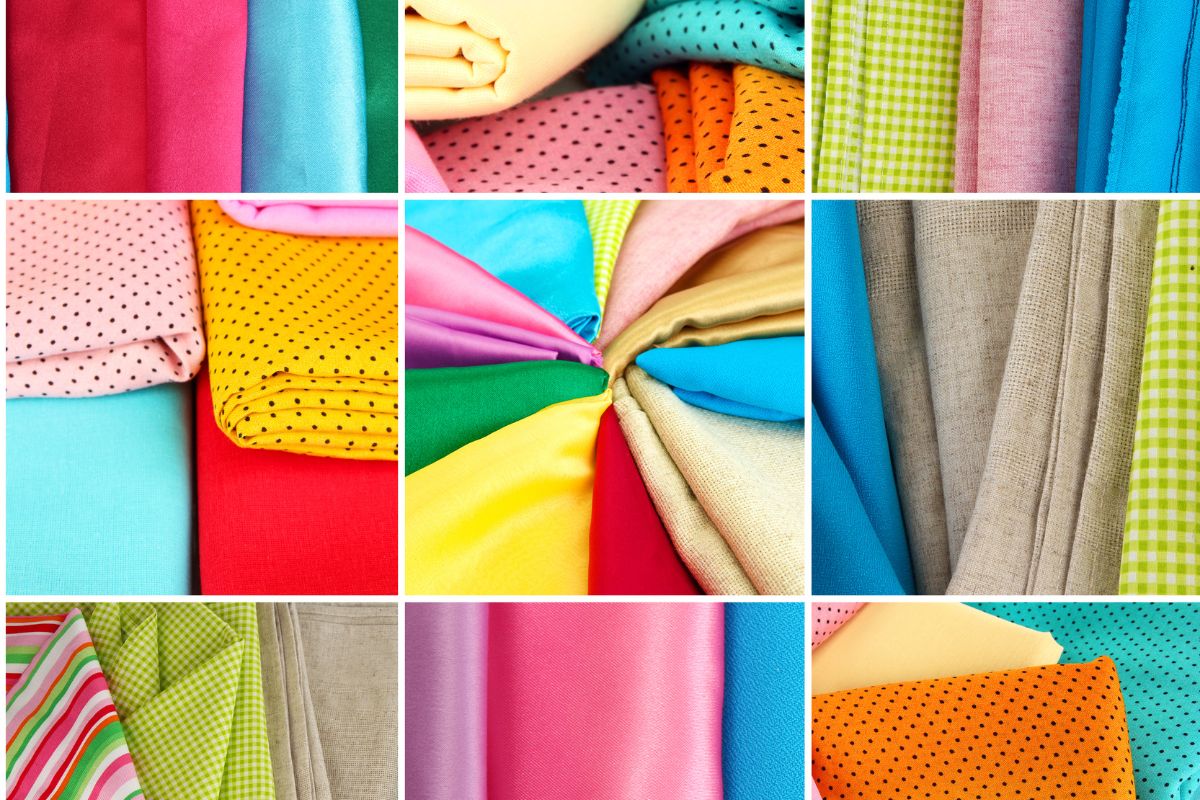
In your exploration of breathable fabrics, you’ll find that viscose offers unique properties when compared against both natural and synthetic counterparts.
Vs. Natural Fabrics
Viscose, a type of rayon, originates from natural cellulose, which undergoes a manufacturing process to become a fiber. Cotton and linen, widely known for their breathability, are composed of natural fibers that allow for excellent air circulation. Viscose, while not as breathable as cotton or linen, still provides a cooler wearing experience than many other fabrics.
When compared to silk, viscose offers a more affordable and vegan-friendly alternative with a similar drape and lustre, though silk remains superior in terms of breathability and temperature regulation. Bamboo fibers, which sometimes are processed into a type of rayon such as modal or lyocell, also present high breathability. These fabrics, while sharing the same source material as viscose, are often produced using more environmentally responsible processes that retain more of the bamboo’s natural properties, including moisture-wicking and antimicrobial characteristics.
Vs. Synthetic Fabrics
Synthetic fibers like polyester, nylon, and spandex predominantly derive from petroleum and generally offer less breathability than viscose. Polyester, widely used for its strength and durability, often leads to a less comfortable feel in hot weather due to its lower moisture absorption.
On the other hand, synthetic fibers are known for their stretching capability, with spandex being highly elastic, which makes them desirable for activewear. Viscose does not inherently have the same elasticity as these synthetics but combines well with them to add breathability to the stretchy material. It’s also worth noting that viscose tends to show less resistance to wear and tear in comparison to synthetic fibers, which may influence your fabric choice based on the intended use.
Common Uses of Viscose Fabric

Viscose fabric is favored for its silk-like feel and superb drape, making it a popular choice in fashion and home decor. Its breathability and moisture-wicking properties render it an excellent material for comfortable and stylish items.
Clothing
When you’re looking for comfortable and chic attire, viscose fabric is often a go-to material. Its ability to adapt to different styles makes it popular for a variety of clothing items:
- Activewear: Because of its moisture-absorbing qualities, viscose is incorporated into activewear, helping to keep you dry during workouts.
- Dresses & Blouses: The fluid drape of viscose lends beautifully to dresses and blouses, giving them a graceful movement and an elegant appearance.
- Shirts & Pajamas: Viscose is used for shirts and pajamas, delivering comfort that is especially desirable in warm climates due to its breathable nature.
- Lightweight Fabric: The lightweight characteristics of viscose make it a favored choice for summer fabrics, perfect for staying cool on hot days.
Home Textiles
Viscose fabric isn’t limited to your wardrobe; it extends its utility to your home, offering both style and comfort:
- Bedding & Sheets: Incorporating viscose into bedding and sheets ensures a soft touch and helps enhance sleep quality by regulating temperature and wicking away moisture.
- Decor: As a decorative textile, viscose adds an element of luxury and comfort, often employed in items like throw pillows and draperies where a soft hand feel is desired.
Care and Maintenance of Viscose Fabric

Understanding the appropriate care for viscose fabric is key to maintaining its luxurious feel and ensuring longevity. With the right practices, you can preserve the breathability and delicate nature of the material.
Cleaning Best Practices
When cleaning viscose fabric, always opt for dry cleaning when possible to maintain the fabric’s integrity and appearance. This method helps to prevent shrinkage and preserve the wrinkle-resistant qualities of the fabric. If machine washing is necessary, use a gentle cycle with cold water and a mild detergent:
- Handwashing: Gentle handwashing can be a safer alternative.
- Submerge in cold water mixed with mild detergent.
- Gently agitate without wringing or twisting the fabric.
- Machine Washing (if the care label allows):
- Use a “delicates” or “hand wash” cycle.
- Place the garment in a mesh laundry bag to avoid excessive agitation.
After washing:
- Do not tumble dry. Instead, lay flat on a clean, dry towel away from direct heat or sunlight.
Preserving Fabric Integrity
Viscose fabric tends to be more fragile than other fibers, so careful handling is essential to prevent damage.
- Avoiding Shrinkage: Never use hot water or a hot dryer, as this can cause significant shrinkage.
- Durability Care: To maintain durability,
- Iron on low heat with a pressing cloth between the fabric and the iron to prevent scorching.
- Hang garments up or store them folded in a drawer to avoid permanent creasing.
By adhering to these care guidelines, you’ll extend the life of your viscose garments while keeping them looking their best.
Viscose Fabric Blends and Innovations
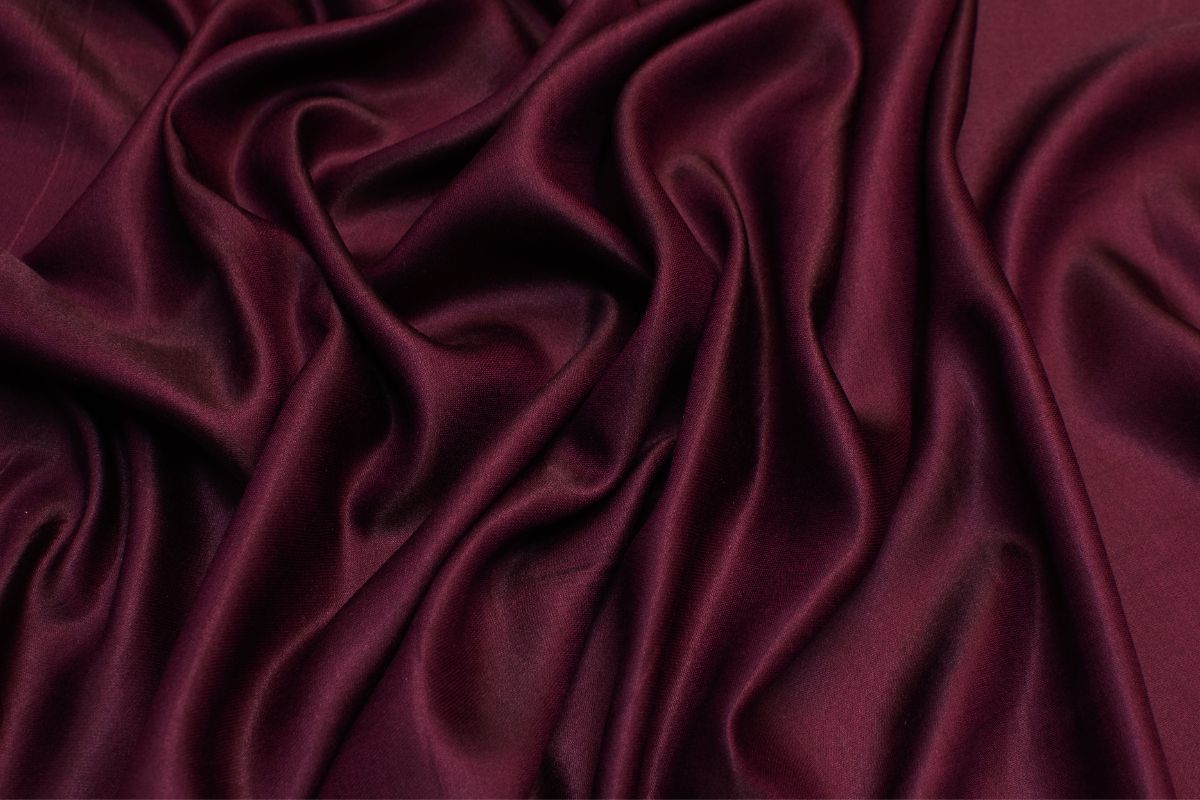
When you explore the world of textiles, understanding the interplay between viscose fabric blends and technological enhancements broadens your scope on breathable fabrics. These innovations cater to your need for comfort with a broad application from clothing items to bedding.
Blended Fabrics
Viscose blends come in various combinations, offering a unique balance of softness, strength, and breathability. Viscose/linen blends synergize the fluid drape of viscose with the robustness and natural feel of linen, making it perfect for your breezy summer attire. A viscose/polyester blend is popular in fast fashion due to its durability and easy care, while a viscose/spandex mix includes stretchability for your sportswear and form-fitting pieces.
If you’re seeking eco-friendly options, blends of viscose with cotton enhance comfort and moisture management, leveraging cotton’s absorbent properties. These blends often find their way into your bedding and casual wear, such as chambray shirts, ensuring a comfortable sleep or day ahead.
Technological Enhancements
Technological advancements have pushed the envelope in fabric innovation, yielding superior performance and comfort characteristics. Fabrics like viscose/silk leverage technological processes to mimic the luxurious hand feel and sheen of pure silk, while enhancing breathability and offering a more affordable price point.
Structured research has resulted in viscose blends that are better at thermal regulation and moisture wicking. For your active lifestyle, textiles incorporating blends with polyester and spandex provide stretch and resilience, ensuring the fabric moves with you while maintaining breathability. Advances in weaving and finishing techniques help ensure that your clothing items made from these blends withhold their structure and comfort over time.
By integrating these fibers and utilizing innovative technologies, the textiles industry continues to deliver high-quality, breathable fabrics that meet your everyday needs.
Environmental and Health Impact
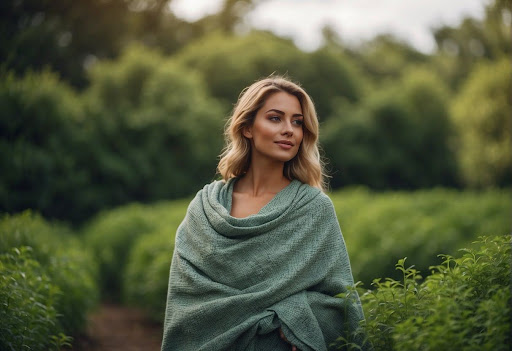
When considering the breathability of viscose fabric, it’s important for you to be aware of its environmental and health impact. The production of viscose involves chemical processes that can affect both human health and ecological systems.
Chemical Use and Pollution
The production of viscose typically requires toxic chemicals such as carbon disulfide and sodium hydroxide. High levels of exposure to carbon disulfide have been associated with serious health risks, and improper handling can lead to chemical pollution in the surrounding environment. The discharge of these substances into waterways can significantly harm aquatic life and disrupt local ecosystems. Understanding the chemicals used and the potential for pollution is crucial for assessing the overall impact of viscose on your health and the environment.
Sustainable Practices and Certifications
In recent years, there has been a push for more sustainable practices in the production of viscose, with companies like H&M and Next engaging in efforts to reduce environmental harm. Seeking out viscose products with eco-certifications can help ensure that you are choosing fabrics that align with environmentally friendly standards. Look for regulations and standards like the Forest Stewardship Council (FSC) that help prevent deforestation and protect the canopy. Such certifications often imply that the production process is monitored and adheres to stricter controls to minimize the environmental impact.
Market Trends and Consumer Preferences
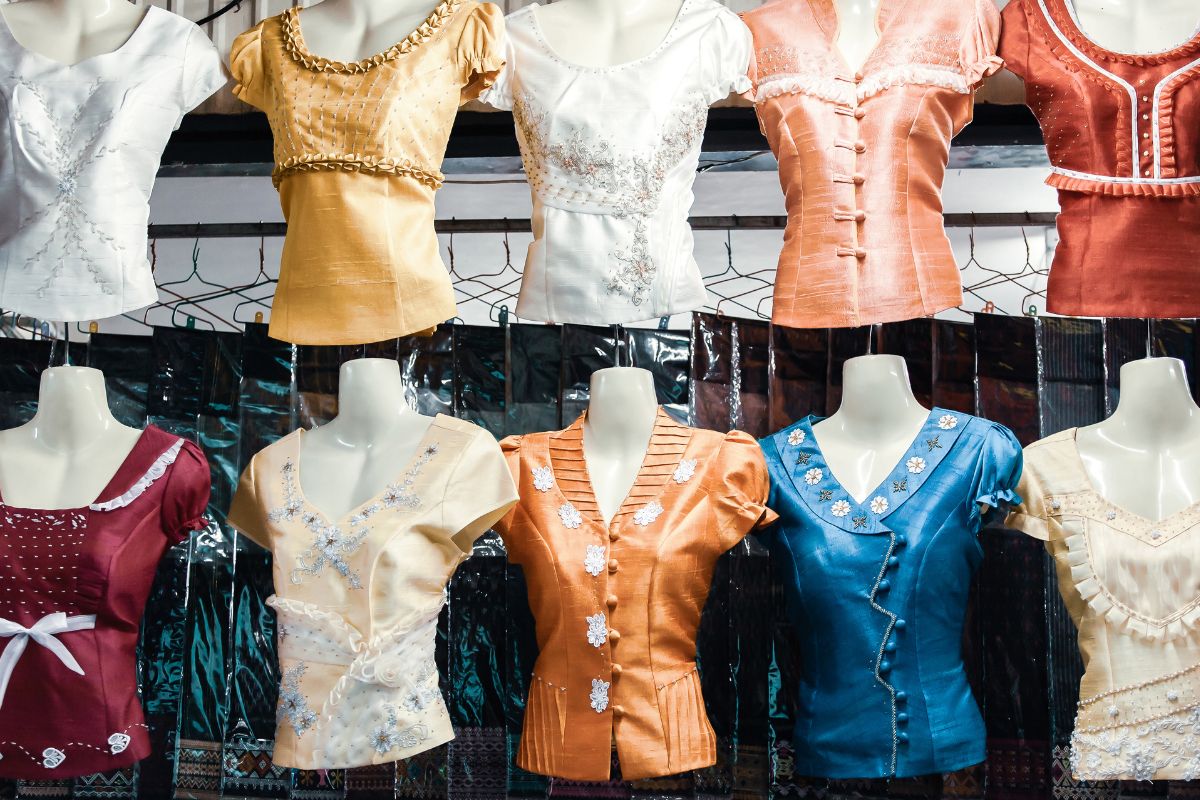
In the dynamic world of fashion, your choices are shaped by both the practicality and sustainability of the fabrics. The popularity of certain textiles and innovations in the industry play a pivotal role in what you find on the racks.
Fabric Popularity
You’re increasingly leaning toward sustainable and affordable fabrics like viscose, which strike a balance between moisture retention and breathability. Often compared to silk in its feel, viscose is a versatile fabric favored in the market for its silk-like luster and affordability. This affordable option doesn’t sacrifice functionality for cost, making it a popular choice among value-conscious consumers.
Another rising star in your wardrobe is Modal, known for its extra soft feel and eco-friendly production process. Fabrics such as Tencel and Lyocell, both derived from renewable wood sources under the brand Lenzing, are gaining traction as well due to their sustainable production methods and comfortable wear.
Innovations in Textile Industry
The textile industry continues to evolve with an emphasis on sustainability. You’re witnessing a shift towards materials like hemp, merino wool, and Tencel, which not only provide comfort but also promote environmental stewardship. These innovations meet your demand for clothing that supports a more sustainable fashion industry without compromising on quality.
- Hemp: Durable and breathable
- Merino Wool: Natural temperature regulation
- Tencel: Smooth surface and biodegradable
Your preferences are driving changes in the market, pushing designers and manufacturers to explore eco-friendly materials that maintain the quality and comfort you expect. The popularity of these innovations indicates a collective move towards a more responsible fashion ecosystem.
Frequently Asked Questions
In this section, you will find specific information addressing common inquiries about the breathability and use of viscose fabric.
How does the breathability of viscose compare to cotton?
Viscose fabric, although not as breathable as cotton, can still offer moderate breathability due to its semi-synthetic nature. It’s worth noting that cotton has superior breathability which makes it a preferred choice in hot and humid conditions.
What are the downsides of wearing viscose fabric?
Viscose fabric can be less breathable than natural fibers and may retain moisture, leading to potential discomfort in hot weather. It also tends to wrinkle easily and may shrink when washed in warm water.
Can viscose fabric be considered suitable for summer weather?
While viscose is lightweight, its breathability is not as high as that of natural fibers, making it less suitable for high temperatures. However, its draping quality and silk-like feel can still make it a comfortable choice for summer if blended with other more breathable fabrics.
What are the pros and cons of using viscose fabric in clothing?
The pros of using viscose include its silk-like luster, draping qualities, and affordability. The cons encompass its tendency to wrinkle, lower breathability compared to cotton, and that it can be weakened by moisture.
Does wearing viscose contribute to excessive sweating?
Viscose can contribute to sweating in hot conditions due to its lower breathability compared to natural fibers. Being less efficient at wicking away moisture, it may not be the best choice for activities that cause perspiration.
Is viscose derived from natural sources, and what are its environmental impacts?
Viscose is derived from natural cellulose from wood pulp, making it semi-synthetic. Its production process involves chemicals that have environmental impacts, questioning the sustainability of its use in clothing.

